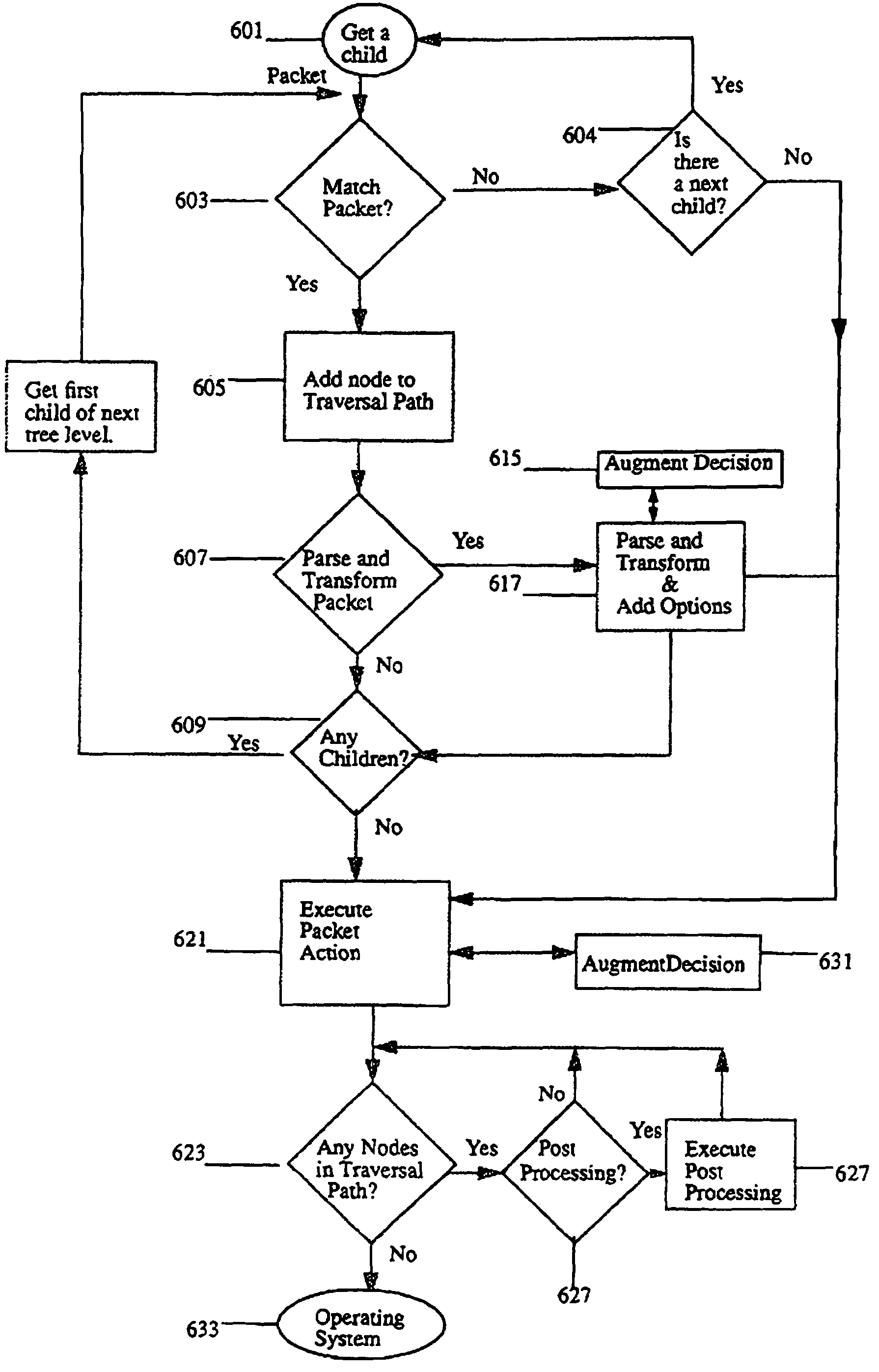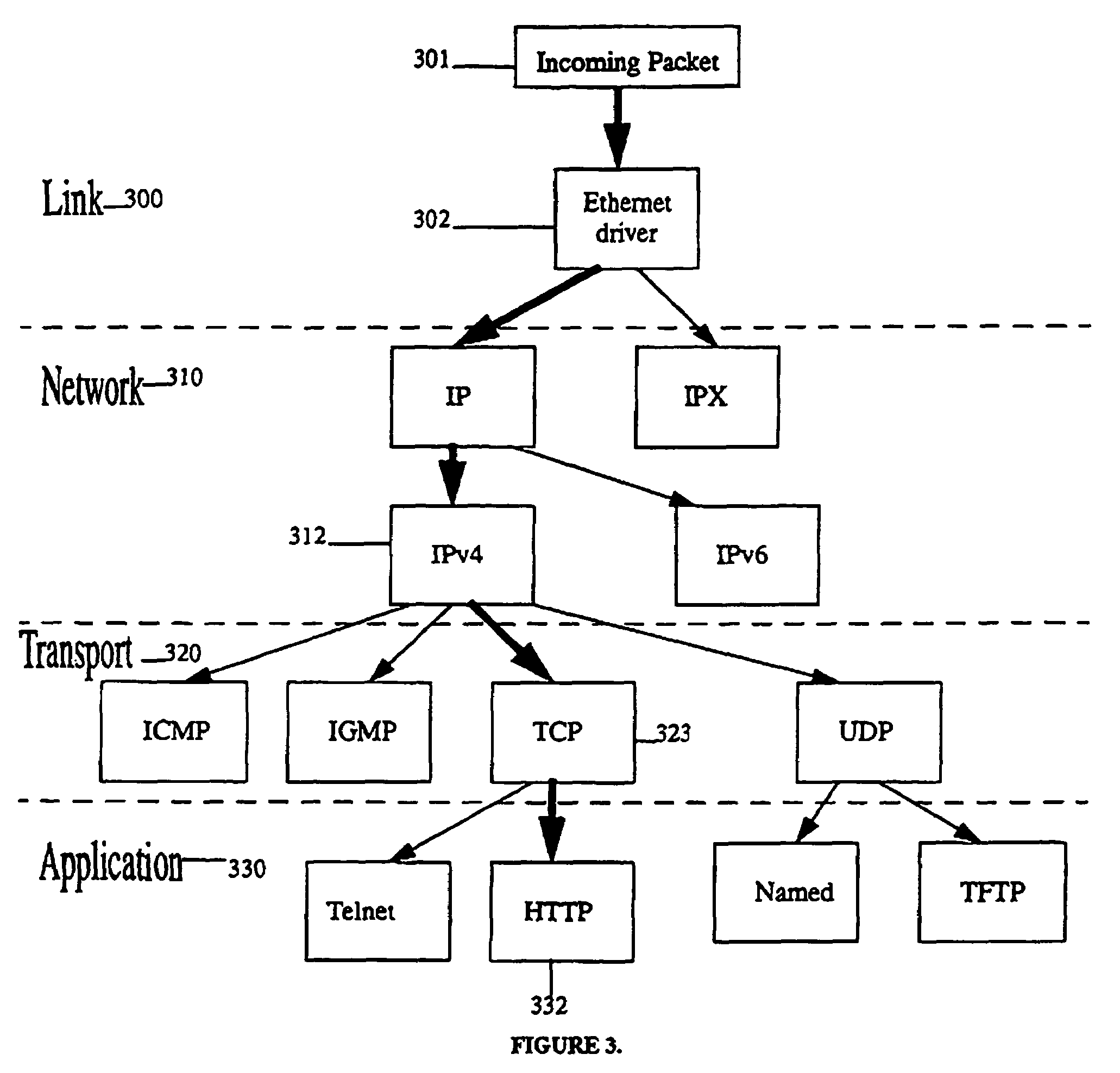Network data packet classification and demultiplexing
a network data and packet technology, applied in the field of packet communication, can solve the problems of traditional packet classification system, limited to a set of fixed pattern matching rules, and systems that do not provide simple methods to extend packet processing to understand new applications, and achieve the effect of greater flexibility
- Summary
- Abstract
- Description
- Claims
- Application Information
AI Technical Summary
Benefits of technology
Problems solved by technology
Method used
Image
Examples
Embodiment Construction
[0031]Networking protocols are normally divided into layers which are responsible for different facets of communication as FIG. 1 depicts for the network layers of the TCP / IP protocol. The associated call graph created by the standard UNIX protocol stack is arranged like a tree as described for FIG. 3. Each level of the tree corresponds to a different layer in the networking protocol stack. The present invention mimics the call graph of the UNIX protocol stack and organizes the different modules competing for packets at the IP layer in a tree structure herein referred to as a classification tree.
[0032]An example of a classification tree 400 is shown in FIG. 4. FIG. 4 shows each node in the classification tree as a separate module. In an embodiment of the present invention each node is composed of 4 packet traversal functions (matcher, preprocessor, action, and post processing) and 3 node management functions (callback, heartbeat and management). Only the packet matching function, wh...
PUM
 Login to View More
Login to View More Abstract
Description
Claims
Application Information
 Login to View More
Login to View More - R&D
- Intellectual Property
- Life Sciences
- Materials
- Tech Scout
- Unparalleled Data Quality
- Higher Quality Content
- 60% Fewer Hallucinations
Browse by: Latest US Patents, China's latest patents, Technical Efficacy Thesaurus, Application Domain, Technology Topic, Popular Technical Reports.
© 2025 PatSnap. All rights reserved.Legal|Privacy policy|Modern Slavery Act Transparency Statement|Sitemap|About US| Contact US: help@patsnap.com



